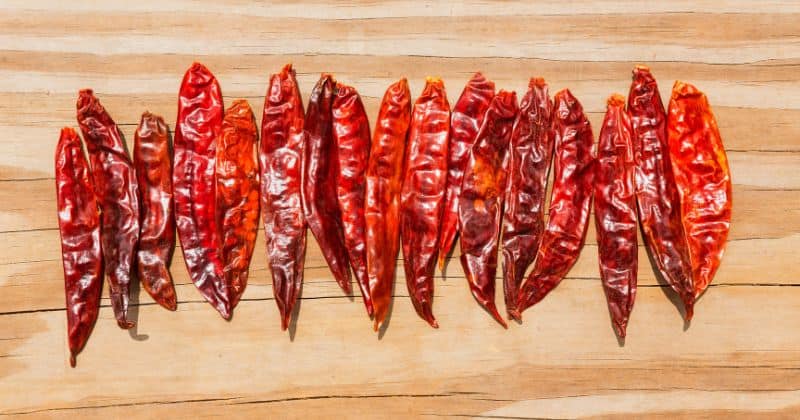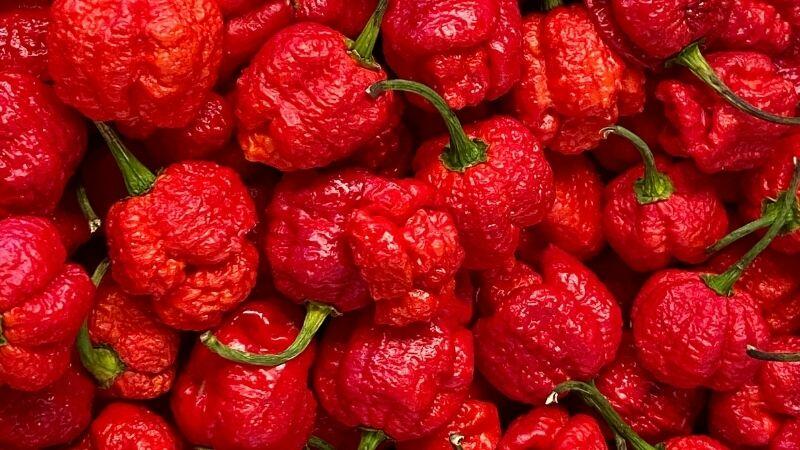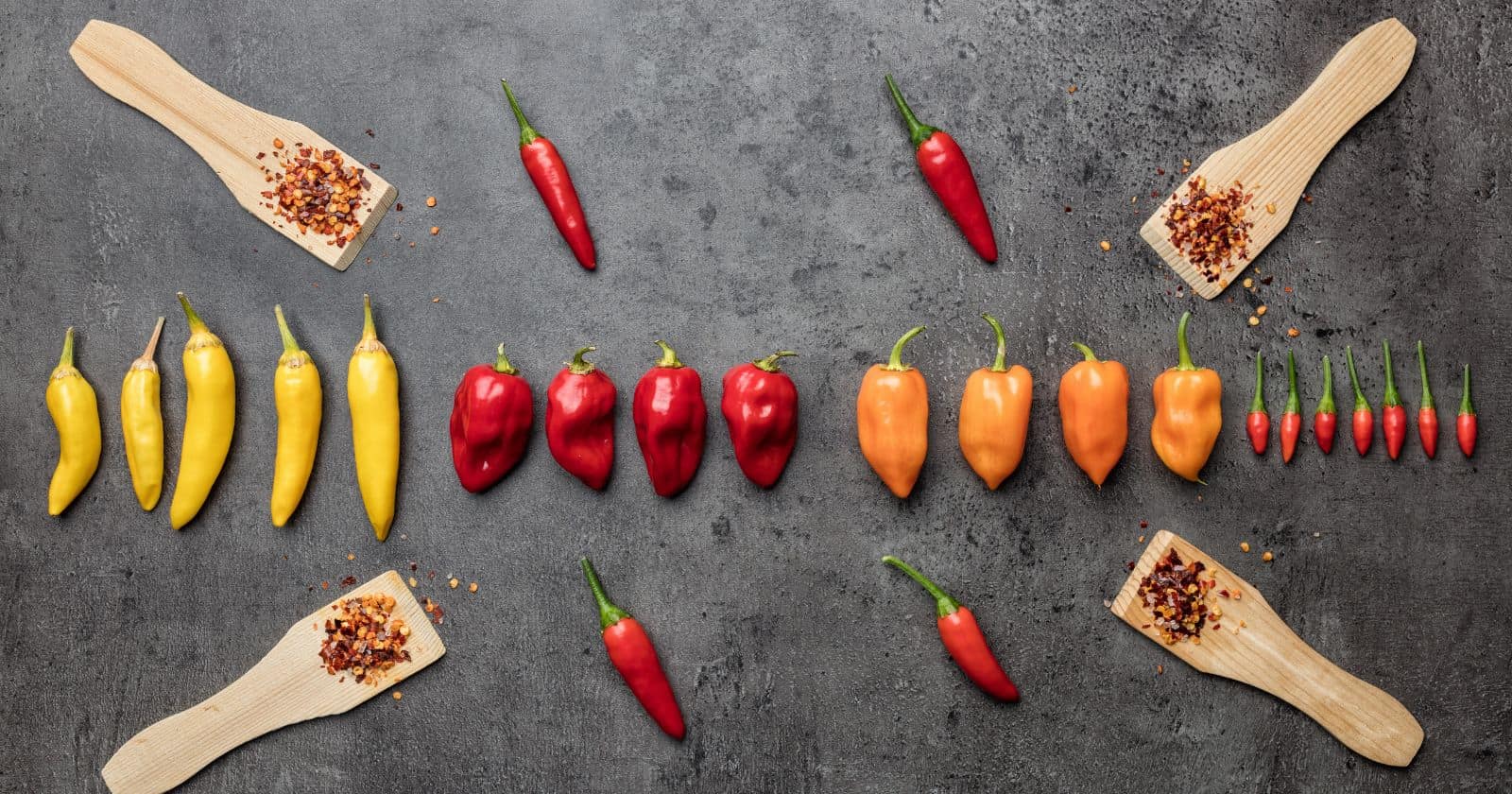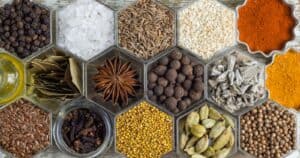Hey spicy food fans! If you love to push your limits with super-hot peppers, you’ve probably wondered: how many Scoville units can actually kill you? As thrill-seeking chiliheads, we all crave that addicting tingle and rush from extra-fiery foods. But at what point does the burn become deadly?
The short answer: There’s no definitive lethal Scoville number. Still, around 1 million SHU is when extreme caution becomes crucial. Consuming higher concentrations substantially hikes your risk for severe reactions like respiratory distress. However, your personal tolerance levels matter more than the raw Scoville count.
Here’s the deal: Peppers get their heat from a chemical called capsaicin. It activates your pain nerves, signaling “hot!” Eat moderate amounts, and you get that enjoyable fire. Go overboard, though, and capsaicin can inflict bodily harm.
Capsaicin toxicity can cause:
- Stomach cramps, nausea, vomiting
- Chest tightness, choked airways
- Rapid heartbeat, hypertension
- Skin/eye burns and stinging pain
Yikes! No one wants those agonizing outcomes. While capsaicin won’t always be fatal, it can definitely hospitalize you.
So what determines how much heat is too much? Factors like your:
- Age
- Weight
- Genetics
- Tolerance levels
- Medical conditions
For example: A chili-loving 300lb man may tolerate scorching-hot extracts that would send a petite pepper newbie to the ER.
The takeaway? Start slow and moderate your intake once you move into the mega-scoville realm. Respect the burn so you can safely savor those spicy flavors.
In this article, you’ll discover:
- A Scoville scale overview
- How capsaicin causes bodily harm
- Warning signs you’ve had too much heat
- Tips for Fiery food safety
- And more!
Join me as we explore the science, risks, and responsible enjoyment of super-spicy eats. Ready to feel that fire? Let’s do this!
Understanding Scoville Units
Before we get into dangerous territory, let’s start with Scoville 101. The Scoville scale measures the spicy heat or pungency of peppers and chili products. The scale rates them in Scoville Heat Units (SHU), named after the pharmacist Wilbur Scoville, who created this method of measuring chili pepper heat back in 1912.

Here’s a quick pepper heat guide:
- 100-500 SHU – Ranging from sweet bell peppers up to poblano and ancho chilis. Adds mild
spice . - 500-2,500 SHU – Jalapeños and varieties like chipotle. The lower end brings moderate heat while the upper end provides solid spiciness.
- 2,500-25,000 SHU – Chile de arbol, cayenne and tabasco peppers. Starts getting hotter with intense burning sensation.
- 25,000-70,000 SHU – Habanero and scotch bonnet peppers pack serious fiery punches.
- Above 1 million SHU – This is where extracts from the ghost pepper and Carolina reaper enter the scene. Insanely hot and not for the faint of heart!
Now that you’ve got an idea of the Scoville scale, let’s move into the spicier stuff – just how dangerous can pepper heat actually become?
When Does Spice Become Harmful?
Peppers get their fiery burn from capsaicin, the chemical compound that activates our nerve receptors, signaling pain and heat. When consumed in moderation, capsaicin gives chiliheads that addicting tingle and rush. But go overboard, and it can cause some serious bodily harm.
Pure capsaicin rates around 16 million SHU – making it as potent as pepper spray! Pepper sprays are literally used for self-defense and crowd control. Taking in too much capsaicin can have similar debilitating effects.
Potentially Painful Problems
Here are some of the most common adverse reactions to extremely spicy peppers and extracts:
Gastrointestinal Issues
Consuming high amounts of capsaicin can wreak havoc on your digestive system – causing severe abdominal pain, nausea, vomiting and diarrhea.
It can also create painful cramps, intestinal inflammation and damage to the gastrointestinal lining. In rare cases, excessive capsaicin consumption has led to perforated ulcers requiring emergency surgery.
Respiratory Distress
Inhaling high concentrations of capsaicin can cause coughing, choking, wheezing, shortness of breath, chest pain and tightness in the airways.
When the lungs are exposed to extreme pepper heat, it can feel like they are literally on fire. Capsaicin inhalation can trigger full blown respiratory crises.
Cardiovascular Problems
Fiery hot chilies raise your heart rate and blood pressure. For those with existing heart conditions, consuming unusually high amounts of heat can lead to hypertension, stroke, heart palpitations and arrhythmia.
Burning of the Skin and Mucous Membranes
Contact with superhot peppers and extracts can chemically burn and blister the skin and eyes. If capsaicin comes into contact with sensitive mucous membranes, it can cause severe irritation, pain, swelling and damage.
Approaching 1 Million SHU – Handle With Care!

Based on the above reactions, most experts agree that 1 million SHU is the point at which chili pepper heat stops being enjoyable and starts becoming hazardous.
While the average jalapeño ranks around 5,000 SHU, superhots like the Carolina reaper can reach over 2 million SHU. Pepper extracts take it even further.
For example, Pepper X clocks in around 3.2 million SHU – and the aptly named “Source” comes close to 7 million SHU. Heading into this territory requires caution.
When working with extracts at this heat level, experts strongly advise:
- Avoid contact with eyes and skin
- No inhaling fumes directly
- Use only a toothpick for sampling
- Never ingest more than a rice-grain size amount
Going above 1 million SHU substantially increases the health risks. Even pepper veterans can be caught off guard by the extreme effects.
Every Body Reacts Differently
While 1 million+ SHU is universally dangerous, there’s no definitive lethal dose of capsaicin that applies equally across the board. Many factors determine individual tolerance and how severely someone reacts to spicy heat, including:
- Age – Older individuals may be more susceptible to capsaicin’s effects.
- Weight – Heavier folks can potentially handle higher doses.
- Sex – Some research indicates that men tolerate spicy heat better than women.
- Genetic differences – Biology and nerve receptors play a role.
- Tolerance levels – Longtime chiliheads adapt over time.
- Health conditions – Underlying issues multiply risk.
- Medications – Certain drugs may interact negatively.
So while one person might sail through a mega-spicy curry, even a smaller dose could hospitalize someone else. It all depends on the individual.
Playing With Fire Power
When it comes to superhot peppers and extracts, moderation is key. While an occasional ultra-spicy dish can provide an addicting thrill, regularly messing with massive amounts of heat is just asking for trouble.
Here are some tips for chiliheads who want to
- Stick to small amounts of peppers/extracts over 1 million SHU.
- Avoid oral contact with extra-spicy extracts.
- Don’t inhale fumes directly or touch eyes.
- Monitor over-heating symptoms and stop immediately if issues arise.
- Keep milk, yogurt, bread and antacids on hand.
- Know your limits and don’t push beyond them.
- Consult a doctor if you have underlying health conditions.
- Work your way up slowly over time, not all at once.
- Be extra cautious if older, very young or pregnant.
While there’s no definitive lethal dosage, it’s wise to play it safe once you move into the higher SHU ranges. Getting your buzz from ultra-hots can be great fun – just don’t go crazy with the super concentrated fire power.
Wanna play with fire? try One Chip Challenge with the safely tips.
Following the Fiery Food Rules
When it comes to spicy hot peppers and extracts, there are also regulatory standards in place to protect our health.
Governments and agencies globally have set guidelines and restrictions around these fiery ingredients – especially at the upper end of the Scoville scale.
For example, the FDA restricts the capsaicin content allowed in pepper sprays. And Chile’s Ministry of Health regulates hot sauces, setting limits on their Scoville units.
The European Union has designated capsaicin and certain capsaicinoids as restricted food additives – requiring warning labels above a set threshold.
These standards ensure that dangerously potent pepper products don’t end up in the hands of uninformed consumers. They also ban the sale of certain hazardous hot sauces and extracts.
So if you get your hands on any questionable super-spicy products, check for proper labeling and warnings. Only obtain Chile pepper extracts from reputable regulated sources.
Feel the Burn Responsibly!
Alright fellow chiliheads – hopefully this guide gave you some insights into how to safely enjoy the upper limits of pepper pungency. We all love
Stay adventurous with your chili explorations – but also stay grounded in what your body can handle. With some smart precautions, you can get your thrill seeking fix while avoiding serious health consequences.
As Wilbur Scoville himself said, “A little
Let me know if you have any other questions on this fiery hot topic! For now, I’m off to sample a new scorching hot sauce – talk soon!





